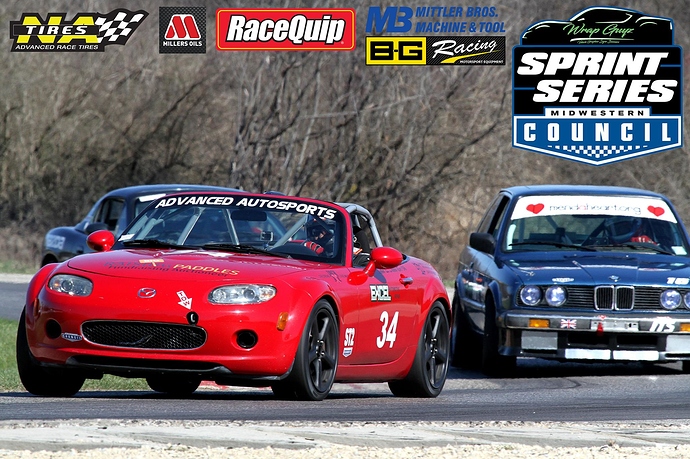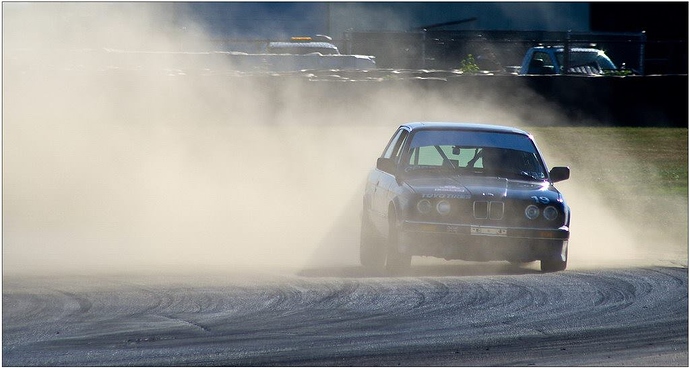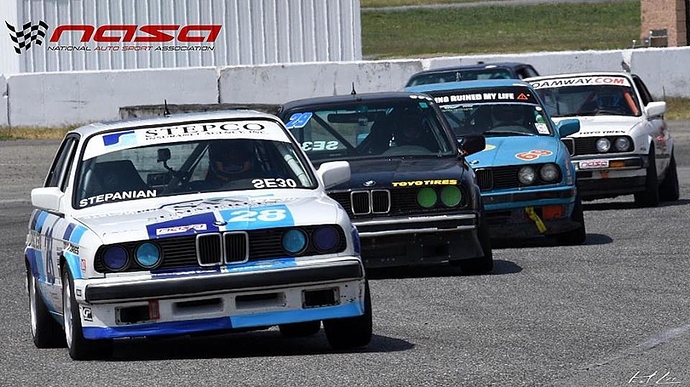And in consideration of the camber plate issues Shawn and Ranger have outlined on Facebook I suspect all this time the root cause of this disparity is due to the camber plates. But also consider that Ground Control’s Koni shock solution actually cuts several inches out of the strut tube to permit a lower ride height.
New springs cause oversteer for a few. Why?
I feel like I need to clarify why you need less camber now compared to when you ran the H&R “Race” springs. A car that rolls a lot, needs a lot of camber to help the tires. Once the car is able to get a flatter stance while turning, the camber can start to become counter productive. Where 3.0 was good in the rear before, you now have much stiffer rates and the roll is not nearly as bad, therefore you need to dial that out to ensure that the tire is again square to the road surface, therefore increasing grip.
You should have seen my face when I read “4 degrees” I probably looked like someone pooped on my desk. 
3.25 with the new springs is just fine.
Sure, but the problems with the old suspension need to be kept in mind for this conversation. Our front was sitting on the bumps on every turn. Our rear was probably bound up pretty often.
Lets say that with the old springs our car should have rolled 5deg at turn X. But instead it rolled only 4deg because of the bump stops. So now we put on significantly stiffer front springs, and somewhat stiffer rear springs and turn X makes our car roll 4deg now. Add to that, the driver plays with his front ride height a bit and now the car can only roll 3.5deg before the outside front corner pins itself on the bumpstop.
In the absence of bumpstops, sure the car would ride flatter with the newer springs. But we can’t say for sure it’s flatter now just because we can now get off the front bumpstops. What we can say it that the spring curve is more flat. So it certainly takes more g’s to get the car to roll. If one raises the front up enough, at some point the stouter front springs will keep the car off of the bumpstops well before that would have happened with the old wimpy springs, given the same lateral g’s. But we don’t yet know the interplay of all that yet.
Sure, if your front is the same height as before, you’ve got 2mm more bump travel then you used to. The thickness of the old spring hats is the difference and they are ~2.4mm thick. I measured the heck out of all of this. So it would take 40-47% more lat g’s to get you to roll on to your bumpstops. Actually a hair more because of the 2.4mm. Therefore the car will feel much stiffer in roll and you’ll smile all the way thru the fast sweeper. Ride height being equal, you’ll spend much less time on your bumpstops. But you may still end up on them, and therefore the actual amount of roll of the car may be the same before and after the change of springs. We just don’t know.
Recall that the only thing changed in the spring test car was the springs. Camber and sways weren’t touched. In the months before our springs finally arrived, I contacted a half dozen E30 racers to get insights as to how our stouter springs might behave and what we might need to do differently. Without exception, everyone I talked seem to be doing pretty mainstream SpecE30 stuff. There were zero surprises re. camber #'s and sway bars. That led me to conclude that our SpecE30 mainstream camber and sways were going to be fine.
That’s why I was very surprised to hear that a few cars started oversteering.
The best empirical analysis here is photography. If you compare how my car looked at Blackhawk in 2014 during the SE30 race compared to 4 weeks ago, the difference is incredible. It’s as though my car doesn’t roll at all any more.
I was also thinking about studying old pics.
I’d sure like to spend some time getting tire temps too. Maybe I can do it in Sept at Roebling.
Also, I am running as much rear camber as I can get away by lowering the rear without adjusters.
Worked very well last week-end.
You are the white car? And good job beating up on Steve 
I can’t tell, is that Star Mazda???
I’d be interested in whether the cars having oversteer problems are early or late models. I must have gotten the setup wrong with the new springs and my car was undriveable due to oversteer even with the rear bar disconnected. I have an early model.
I was expecting all the cars to see a decrease in understeer (transition to oversteer), based on the new springs adding a lot more roll stiffness in the rear than the front. The fact that it’s only affecting SOME, and in apparently dramatic fashion, is interesting, and could point to something else.
Has anyone MEASURED the spring rates of the cars that now have oversteer vs ones that didn’t find a change in handling balance?
For anyone discussing coil-bind, I would expect to find snap-oversteer when suddenly bottoming out.
The consideration of the front having previously been utilizing the bump-stops is interesting, I would expect those cars to have had severe understeer, though, especially when hitting mid-corner bumps. In any case, if the car is now NOT using those bump stops, then the increase in the rear spring rate vs the front may be even more dramatic than the spring rate changes alone had indicated.
I would suggest looking at ride heights as a potential common theme. If the rear roll center is too high, or had too much rake, it could create oversteer. If too low, it could be getting into the bump stops, possibly.
New springs added a lot more roll stiffness in front then rear. 40-47% more stiff in the front, depending on who’s #'s one uses for H&R Race. 14% more stiff in the rear.





